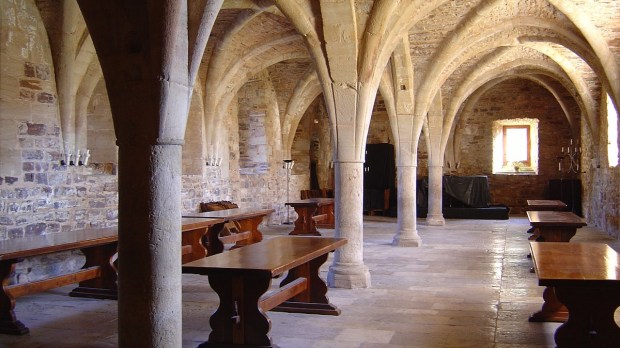The evolution of written manuscripts, particularly codices, is interwoven with the fascinating development of bookmarks – those very essential tools that help us to mark our progress as we read a text. Whereas an exploration of the history of bookmarks surely unveils their functional significance, it also sheds light on the pivotal role played by monasteries in their invention and widespread usage.
Recent research has shown that bookmarks have been around at least since the 1st century AD. The earliest surviving bookmark dates back to the 6th century. It is an exceptional object indeed. Fashioned from intricately ornamented leather and lined with vellum on its reverse, this artifact was discovered under the ruins of the monastery Apa Jeremiah, in Sakkara, Egypt. Its attachment to the cover of a Coptic codex (Codex A, MS 813 Chester Beatty Library, Dublin) with a leather strap accentuates its functional and integral connection to these ancient manuscripts – and proves monks already used these simple yet important tools.
The unearthing of additional bookmarks and their remnants from Coptic codices spanning the 1st to the 11th century, as well as from Carolingian codices of the 8th to the 12th century, shows the widespread use of this simple yet noble marking instrument.
Throughout the medieval era, bookmarks were fashioned predominantly from small parchment strips affixed to the folio’s edge or through the attachment of a piece of cord to the headband – pretty much like the ones found in our contemporary Bibles.
It is widely known that monasteries emerged as scholarly centers of preservation of knowledge during medieval times. Within these precincts, scribes and monks devoted their lives to the meticulous transcription and conservation of invaluable texts, laying the foundation for the proliferation of bookmarks. The intrinsic association between monasteries and the evolution of bookmarks can be attributed to the monks’ dedicated engagement with manuscripts. As they meticulously copied and studied these texts, the need to navigate through lengthy volumes efficiently and return to specific sections became imperative.
To pray the Divine Office
The pragmatic necessity for these aids in manuscript navigation was further compounded by the religious practices prevalent within monastic life.
Regular scriptural readings like the Divine Office, which follows specific schedules and demands specific readings, required efficient mechanisms to mark and resume reading at designated points. As a result, monks ingeniously devised and utilized bookmarks as indispensable tools, facilitating a seamless return to specific passages, prayers, or texts within their extensive manuscript collections.
The ingenious creation and consistent usage of bookmarks within monasteries signified a convergence of practicality and reverence for knowledge. Their innovation stands as a testament to the resourcefulness of the medieval scholars, underscoring their commitment to the meticulous study and preservation of texts. The enduring legacy of these humble yet pivotal tools has shaped literary history, as modern-day readers continue to employ and cherish bookmarks as indispensable companions in their literary pursuits.
Find a collection of thoughts on books here.

